|
|
|
||||||||||||||||||||||||||||||||||||
|
|
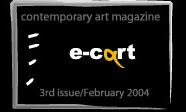 |
|
|
||||||||||||||||||||||||||||||||||
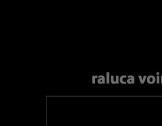 |
 |
 |
 |
|
|
||||||||||||||||||||||||||||||||
 |
 |
|
|
||||||||||||||||||||||||||||||||||
|
|
|
 |
|
||||||||||||||||||||||||||||||||||
|
|
|
||||||||||||||||||||||||||||||||||||
|
|
|
||||||||||||||||||||||||||||||||||||
|
|
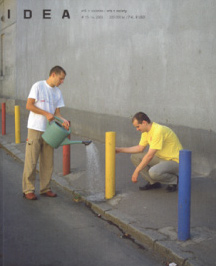 |
|
|
||||||||||||||||||||||||||||||||||
|
|
 |
 |
|
||||||||||||||||||||||||||||||||||
|
|
 |
|
|
||||||||||||||||||||||||||||||||||
 |
|
||||||||||||||||||||||||||||||||||||
|
|
|
||||||||||||||||||||||||||||||||||||
 |
|
|
|
||||||||||||||||||||||||||||||||||
|
|
|
||||||||||||||||||||||||||||||||||||
|
|
 |
|
|
|
|
||||||||||||||||||||||||||||||||
|
|
|
|
|
|
|
||||||||||||||||||||||||||||||||
|
|
 |
|
|
||||||||||||||||||||||||||||||||||
|
|
|
|
|
||||||||||||||||||||||||||||||||||
 |
|
||||||||||||||||||||||||||||||||||||
|
|
|
||||||||||||||||||||||||||||||||||||
|
|
|
 |
|
||||||||||||||||||||||||||||||||||
|
|
|
|
|||||||||||||||||||||||||||||||||||
 |
|
||||||||||||||||||||||||||||||||||||
|
|
|
||||||||||||||||||||||||||||||||||||
|
|
|
||||||||||||||||||||||||||||||||||||
|
|
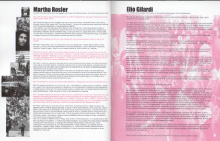 |
|
|
||||||||||||||||||||||||||||||||||
|
|
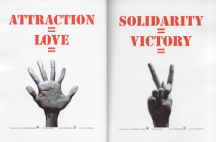 |
|
|
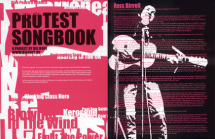 |
|
|
|||||||||||||||||||||||||||||||
 |
 |
|
|||||||||||||||||||||||||||||||||||
 |
|
||||||||||||||||||||||||||||||||||||
|
|
|
|
|||||||||||||||||||||||||||||||||||
|
|
|
||||||||||||||||||||||||||||||||||||
|
|
|
|
|
|
|
|
|
|
|
|
|
|
|
|
|
|
|
|
|
|
|
|
|
|
|
|
|
|
|
|
|
|
|
|
|
|
|
Because it is the only contemporary art magazine printed in Romania that has become a known fact: it has a history, a clear position (an independent one) and a discourse adequate to this one. For 13 issues - under the identity of Balkon Cluj - it has helped at the construction of the context for an art still chaotic, stumbling and poverist-ephemeral, and since September 2003 - under its new version as Idea - it assumes the role of de-constructing this context, of putting it under a more complex interrogation, aiming not as much at the reviewing of the tendencies and practices of contemporary art, but mostly to their analysis as manifestations and structures of the society where they appeared and which they are part of.
Which society is all about? The Western one, where projects are still developing, ideas are being exchanged, movements and post-movements are coined.
…In which both the war - "economically, technically and symbolically" globalizing and mainstream (Jean-Luc Nancy) and the street protests, anti-globalizing and "alternative" (Adrian T. Sarbu) are signs of an aestheticised life that answers to the imperatives of the media show.
…From which are also part the contemporary art biennials - this almost-utopian constructions offering something to see/like/judge for everyone, puzzling often through the curatorial concepts that oscillate between expressed day-dreaming and pragmatic speculations (Istanbul, Venice), but still satisfying one through the discovery of some unexpected neighbourhoods and the rediscovery of some known names/faces. And whenever the biennials are too tiring, there is another kind of exhibition, "like an organic structure" (Judit Angel), which adapts itself to the existent discourse of some artists, without imposing patterns.
… The same Western society, with its Balkan desires, as one can read it in Dan Perjovschi's article about that "gorge-ous" zone where the borders and the identities are permanently changing - an area that the exhibitions, like the joining treaties, put more to the South or to the East, after one's imagination, funds or necessity, the West still remaining a reference point and a target; or maybe the Balkans, wherever they are, should self-define themselves positioning critically towards that West which looks upon them "in terms of an enigmatic, impenetrable, impulsive and wild psycho-geography, located at the edge of civilization" (Marius Babias).
…Finally, the Romanian society, which is reflected with its idiosyncrasies, autisms and mayors in the case study about Cluj (a city rivaling chromatically Tirana of Edi Rama) - a dossier where more than an architecture is analyzed a community and this one's reactions/solutions to "an identity obstruction and a crisis of political imagination" (Marius Lazar), already routinized.
Why Idea magazine? Because in the Romanian society, where some have the ideas and others the a(r)teliers, where art is perceived especially on the official route between the Maps' Museum and the House of People, the only civilized and proffessional option remains - still - that of the independent initiative.
Idea, art + society # 15-16, 2003
Raluca Voinea
|
|
|
||||||||||||||||||||||||||||||||||||
|
|
 |
|
|
||||||||||||||||||||||||||||||||||
 |
 |
 |
 |
|
|
||||||||||||||||||||||||||||||||
 |
 |
|
|
||||||||||||||||||||||||||||||||||
|
|
|
 |
|
||||||||||||||||||||||||||||||||||
|
|
|
||||||||||||||||||||||||||||||||||||
|
|
|
||||||||||||||||||||||||||||||||||||
|
|
 |
|
|
||||||||||||||||||||||||||||||||||
|
|
 |
 |
|
||||||||||||||||||||||||||||||||||
|
|
 |
|
|
||||||||||||||||||||||||||||||||||
 |
|
||||||||||||||||||||||||||||||||||||
|
|
|
||||||||||||||||||||||||||||||||||||
 |
|
|
|
||||||||||||||||||||||||||||||||||
|
|
|
||||||||||||||||||||||||||||||||||||
|
|
 |
|
|
|
|
||||||||||||||||||||||||||||||||
|
|
|
|
|
|
|
||||||||||||||||||||||||||||||||
|
|
 |
|
|
||||||||||||||||||||||||||||||||||
|
|
|
|
|
||||||||||||||||||||||||||||||||||
 |
|
||||||||||||||||||||||||||||||||||||
|
|
|
||||||||||||||||||||||||||||||||||||
|
|
|
 |
|
||||||||||||||||||||||||||||||||||
|
|
|
|
|||||||||||||||||||||||||||||||||||
 |
|
||||||||||||||||||||||||||||||||||||
|
|
|
||||||||||||||||||||||||||||||||||||
|
|
|
||||||||||||||||||||||||||||||||||||
|
|
 |
|
|
||||||||||||||||||||||||||||||||||
|
|
 |
|
|
 |
|
|
|||||||||||||||||||||||||||||||
 |
 |
|
|||||||||||||||||||||||||||||||||||
 |
|
||||||||||||||||||||||||||||||||||||
|
|
|
|
|||||||||||||||||||||||||||||||||||
|
|
|
||||||||||||||||||||||||||||||||||||
|
|
|
|
|
|
|
|
|
|
|
|
|
|
|
|
|
|
|
|
|
|
|
|
|
|
|
|
|
|
|
|
|
|
|
|
|
|
|